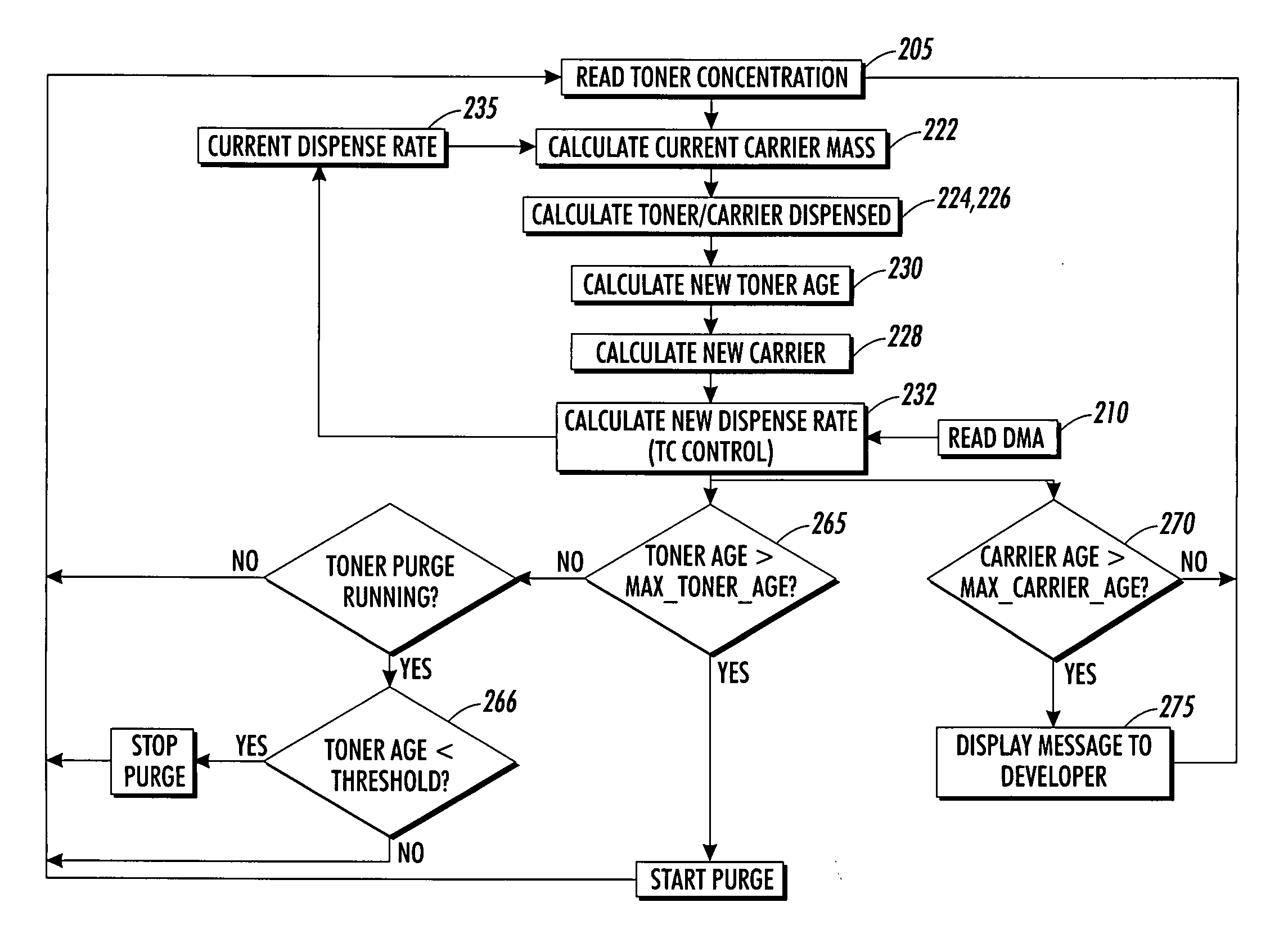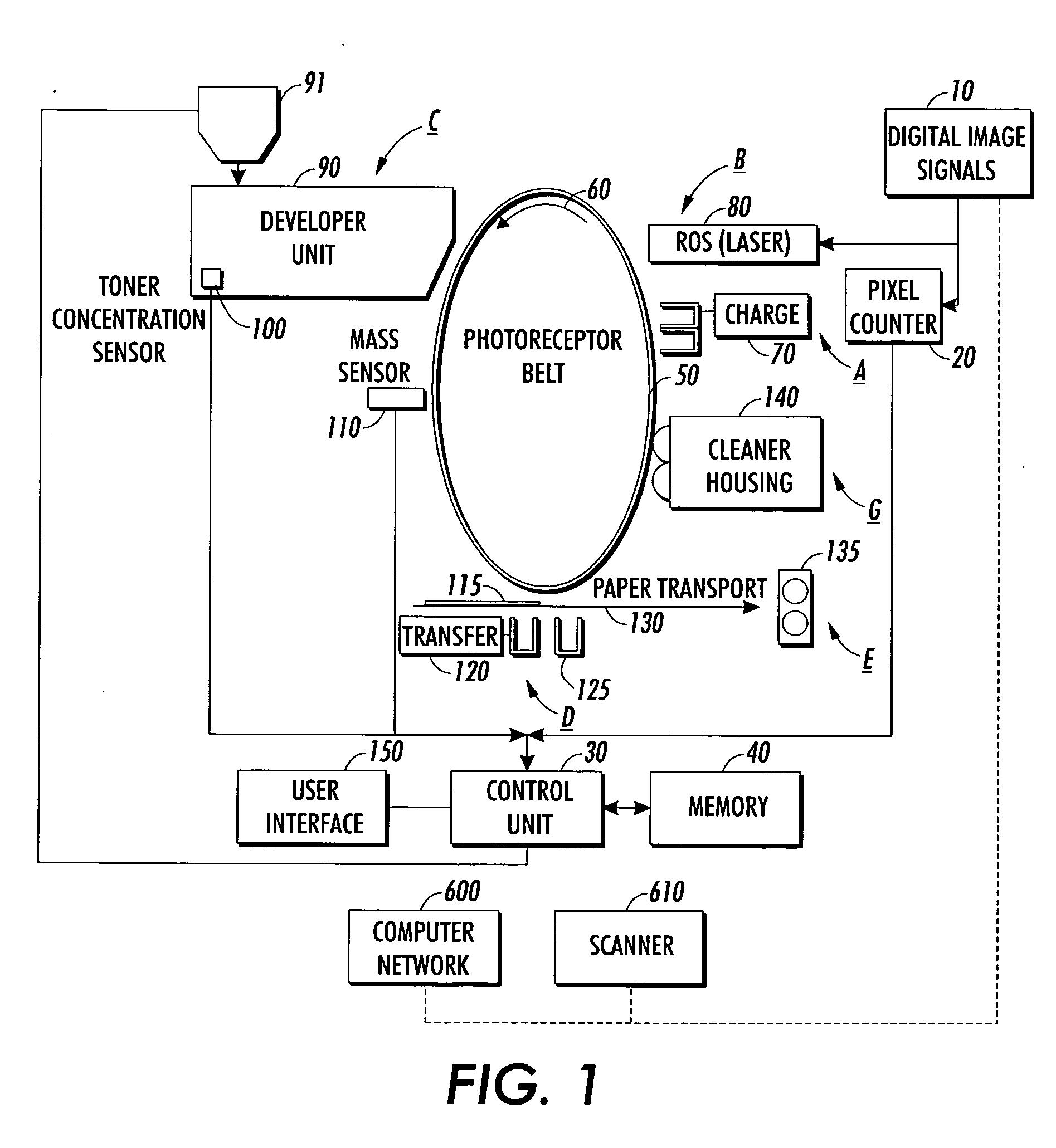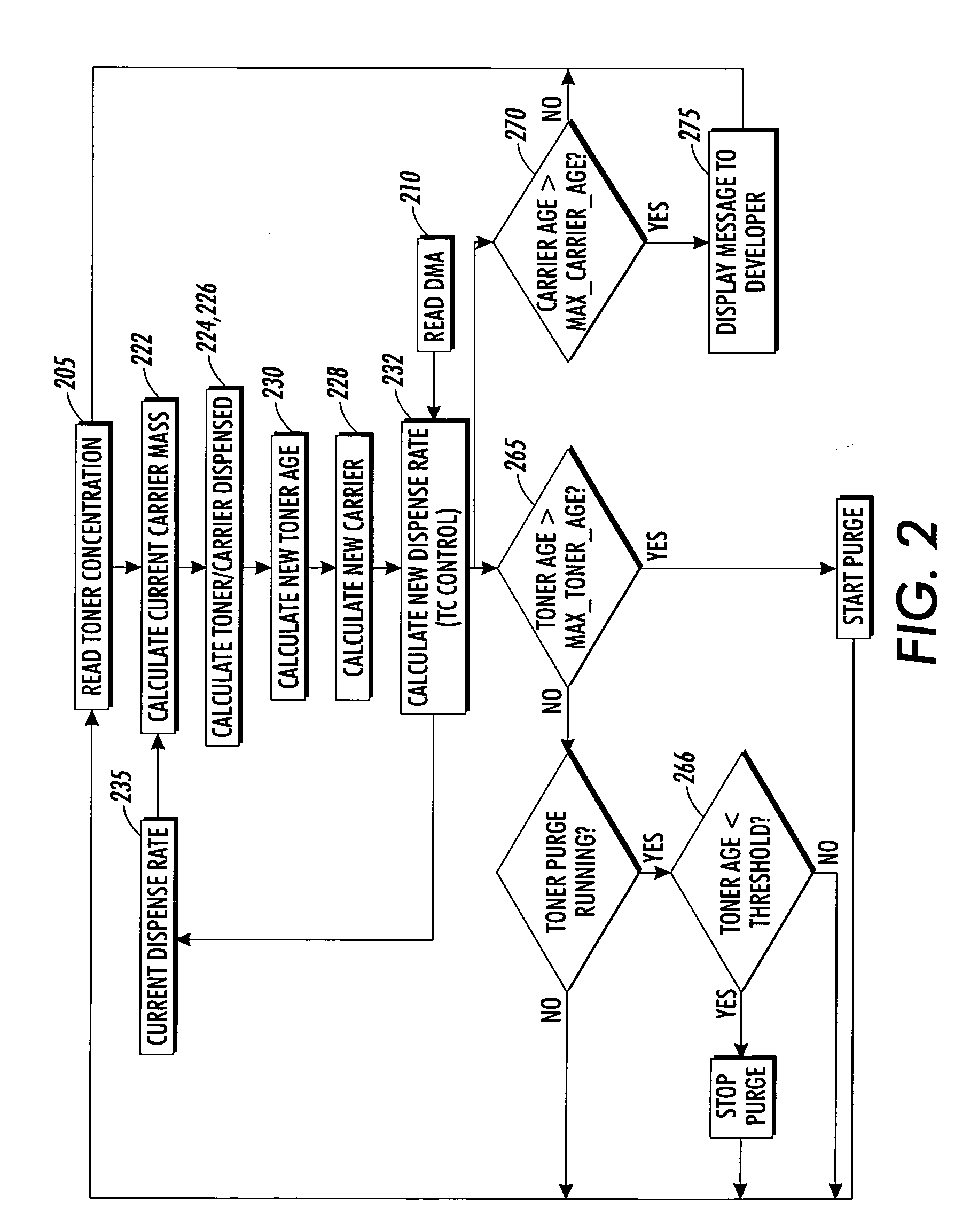Method for calculating toner age and a method for calculating carrier age for use in print engine diagnostics
a technology of toner age and carrier age, which is applied in the field of copying or digital imaging system, can solve the problems of poor development of solid areas, affect the relationship between tc and developability, and visible defects in mono-color images, and achieve the effect of robustness against errors
- Summary
- Abstract
- Description
- Claims
- Application Information
AI Technical Summary
Benefits of technology
Problems solved by technology
Method used
Image
Examples
Embodiment Construction
[0017]FIG. 1 shows a partial schematic of an example of a print engine for a digital imaging system. Digital image signals 10 from a computer network 600, scanner 610, or other digital image signal generating device are received by a pixel counter 20, which counts the number of pixels in the digital image. The digital image signals 10 represent the desired output image to be imparted on at least one sheet or in one non-printing area. The pixel counter 20 outputs this information to a control unit 30, which stores this information in memory 40. The control unit 30 may be a microprocessor or other control device. The pixel counter 20 may be incorporated into the control unit 30.
[0018] A photoreceptor belt 50 advances sequentially through various xerographic process stations in the direction indicated by arrow 60. Other types of photoreceptors such as a photoreceptor drum may be substituted for the photoreceptor belt 50 for sequentially advancing through the xerographic process statio...
PUM
 Login to View More
Login to View More Abstract
Description
Claims
Application Information
 Login to View More
Login to View More - R&D
- Intellectual Property
- Life Sciences
- Materials
- Tech Scout
- Unparalleled Data Quality
- Higher Quality Content
- 60% Fewer Hallucinations
Browse by: Latest US Patents, China's latest patents, Technical Efficacy Thesaurus, Application Domain, Technology Topic, Popular Technical Reports.
© 2025 PatSnap. All rights reserved.Legal|Privacy policy|Modern Slavery Act Transparency Statement|Sitemap|About US| Contact US: help@patsnap.com



